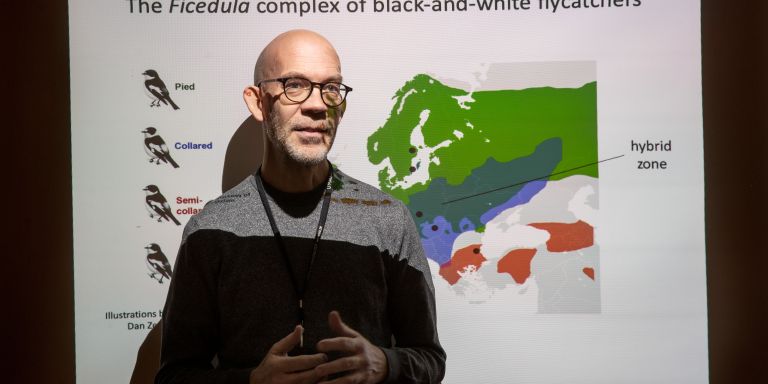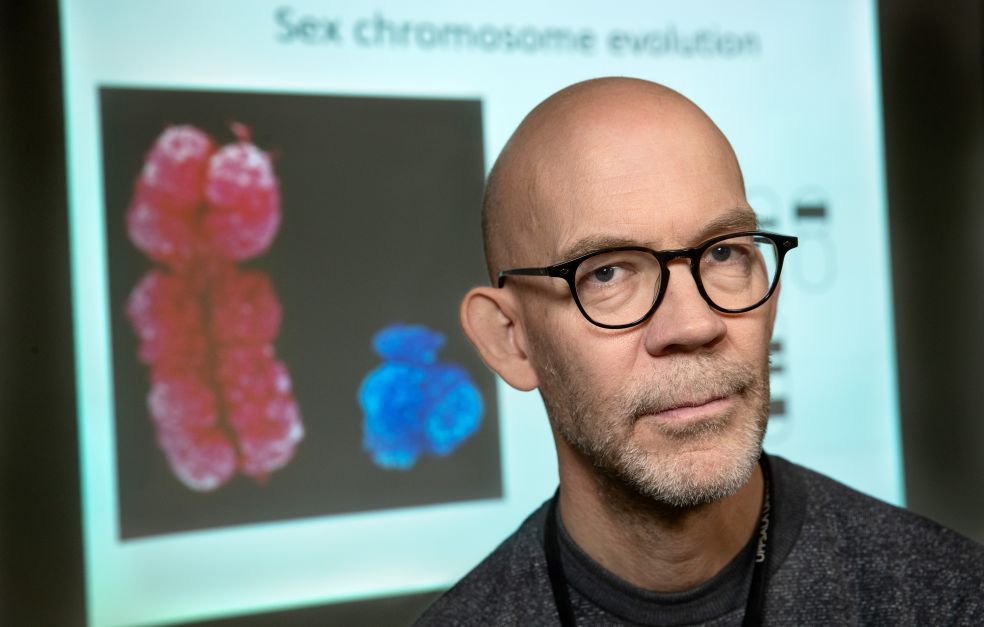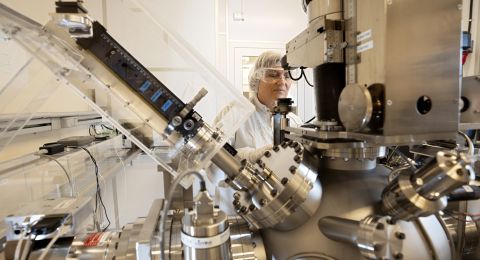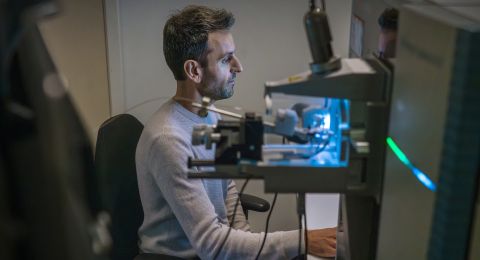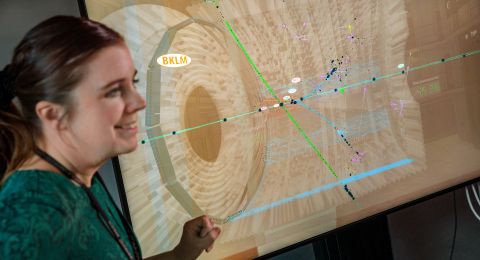Hans Ellegren took his first scientific steps as a young birdwatcher. Now he has turned his keen gaze to flycatcher genes as he investigates the origin of species.
Hans Ellegren
Professor of Evolutionary Biology
Wallenberg Scholar
Institution:
Uppsala University
Research field:
The relationship between evolution at molecular level and individual characteristics
In the foyer of the Evolutionary Biology Centre in Uppsala visitors are met by a glass case from which two stuffed flycatchers stare out through the glass. They occupy pride of place, having served the interests of research since the 1930s. Using genetics as a tool, Ellegren has delved deep into flycatcher DNA to understand how different species evolve.
He has devoted particular attention to the difference between the pied flycatcher (Ficedula hypoleuca) and the collared flycatcher (Ficedula albicollis). These were formerly one species, but the birds became isolated from each other following a glacial period, and evolved into different species. The difference between them can be seen with the naked eye. As its name suggests, the collared flycatcher has a white band around its neck. But differences can also be seen in the DNA of the two species.
Clear differences in DNA
Having sequenced the DNA of hundreds of flycatchers, Ellegren could soon see obvious differences. And those differences were concentrated in certain regions of the DNA. At first, the regions were interpreted as keys to the differences between the species. But he soon realized that the answer was not so simple.
“We now know how these regions behave, and that some of them are quite simply more inclined to accumulate changes. We learned that the DNA of the species can differ quite considerably without having a huge impact,” Ellegren comments.
The critical differences probably occur in the stage when DNA is translated into proteins and enzymes. If the organism is to be viable, it is essential that the right quantity of protein be synthesized at the right place in body.
“It’s here we find fairly major differences between the two flycatcher species, so this is what we’re focusing on.”
Terra incognito
In taking this step forward, Ellegren has taken a leap into the unknown. No one yet knows exactly what determines which proteins are formed at various places in the body. The regions that form our genes make up only five percent of our DNA. The rest has no known function.
And it is probably there the small sections that regulate where in the body different proteins are formed, and in what quantity, can be found.
“We know very little about the location and nature of these sections at present.”
“The Scholar grant enables us to take risks and commit to what we believe in. We can pursue lines of research that we think are important even if they lead us slightly away from the central goals of the project itself.”
Ellegren’s research team is also conducting full-scale genetic research on endangered predators, particularly the wolverine and wolf, adding to knowledge about the DNA of those species.
“We have concentrated on studying the DNA of the Scandinavian wolf population.”
This is a topic that has engaged many people. The debate is frequently heated, and many of those involved pay little heed to the facts. But Ellegren has made sure to stay out of the firing line.
“The debate is highly politicized and rancorous. But our findings are exciting, and can contribute to a subject of enormous public interest,” he says.
Understanding evolution at molecular level
The ultimate goal, irrespective of which species is considered, is to improve our understanding of how the DNA molecule changes, and which processes affect that change. Another aim is to understand what happens when a change meets the surrounding world, and natural selection favors or disfavors different DNA variants.
Technological developments have played a key role in the efforts to understand evolution at molecular level. The bioinformatic approach used by the researchers requires access to specialized laboratories, and the ability to make the calculations on which their analyses are based. The methods also demand new levels of expertise.
“We now view our recruiting requirements quite differently from before. We used to need people who were good at experimental work – now we need people who are good at programming.”
This is basic research where freedom to follow new paths is essential.
“Thanks to Knut and Alice Wallenberg Foundation, we can be completely flexible in our research, and have the courage to commit to what we believe in. Open-ended research, with the freedom to explore new ideas, is best in the long run,” Ellegren stresses.
The freedom and benefit to society of research leads us on to a new topic: research policy. Ellegren is one of Sweden’s most frequently cited researchers, and has a long list of scientific articles to his name. But he has an almost equally long list of management and evaluation roles.
“Many people think we should have managers and leaders who are deeply rooted in research. Having established successful research environments myself, I’m keen to share my know-how.”
At present he performs engagements for the Royal Swedish Academy of Sciences (KVA), and the Swedish Research Council, among others.
“In times when knowledge and scientific information are being questioned, we scientists have a responsibility. Our work is partly funded from the public purse, so we must ensure that the knowledge we produce benefits society. We have a duty to give back,” Ellegren says.
Text Magnus Trogen Pahlén
Translation Maxwell Arding
Photo Magnus Bergström

